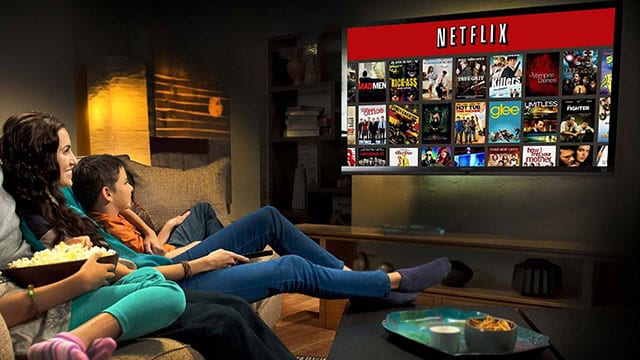Missing all the action in the latest Marvel movie? Not catching the emotional facial expressions in your favorite Romance or Drama?
What about the hilarious social cues and body language in that new Comedy TV show?
Sighted persons often take for granted the significance of special movie moments like the look of longing in a character’s face, or a silent rolling tear.
How Audio Descriptions can Help
Audio Description provides additional commentary and narration during natural pauses and in between dialogue to describe visual content like on-screen text, scene changes, body language, facial expressions, settings, costumes, and more.
Above is an example of the Hunger Games with visual or video descriptions layered in.
Many Television Stations are Required to Use Audio Description
The Twenty-First Century Communications and Video Accessibility Act of 2010 (CVAA) ensures that people with disabilities have equal access to advanced communications – specifically digital, broadband and mobile products and services.
The CVAA brings the Communications Act of 1934 and the Telecommunications Act of 1996 into the 21st century.
Title II, or the Video Programming section of the CVAA, directly relates to the accessibility of products and services involved in video communications, such as video distributors, television, recording devices, and online streaming services. Title II requires both closed captioning and audio description for individuals with vision and hearing disabilities.
Directed by the CVAA, the Federal Communications Commission (FCC) has passed specific requirements and deadlines to comply with the accessibility standards. The FCC enforces the rules and resolves disputes before appealing to the federal courts.
The FCC requires 87.5 hours per calendar quarter (about 7 hours per week) of audio descriptions by local TV station affiliates of ABC, CBS, Fox and NBC.
The top five non-broadcast networks (Discovery, HGTV, History, TBS, and USA) are also required to provide 87.5 hours per calendar quarter of audio description.
The Audio Description Project keeps an updated list of the television channels and specific shows that provide audio description.
Netflix for People with Blindness
The release of Marvel’s Daredevil, which stars a blind superhero, sparked a social media campaign #DaretoDescribe that got Netflix’s attention.
Netflix worked with the American Council of the Blind on an initiative to add audio description to select titles, beginning with Marvel’s Daredevil.
Now, Netflix is the dominant streaming video provider with over 650 titles with audio descriptions.
Amazon and iTunes followed Netflix’s lead adding hundreds of shows and movies with audio description.
- Netflix programs with audio description can be found here.
- Amazon audio described videos can be found here.
- iTunes movies audio description can be found here.
How to Watch Movies with Blindness or Low Vision
Movie theaters owned by AMC, Cinemark, and Regal offer audio description on all screens.
Visit the box office or guest services to request an audio description device. An employee will program the receiver for the correct movie auditorium and provide headphones for you to enjoy your movie with audio descriptions.
Other individual movie theaters may also provide audio descriptions. Check with your local theater.
Prefer to use your own device?
The new app Actiview, available on iOS devices, provides audio description downloads directly to your phone or tablet.
Enjoy automatically synced descriptions at the theater or in the comfort of your own home. Currently, there are a limited number of movies available.
TV and Movies Play a Big Role in Modern Society
Movies and television shows are an enormous part of social interaction. Many people have their first date at the theater, binge watch Netflix on the weekends, and constantly talk about the latest show.
It is critical that the visually impaired community have access to this content to ensure that people with visual impairments are integrated into modern society.


Many people with low vision find the use of filters help. Making the movie/show black and white or even monochrome can sometimes help them make out what’s on the screen.
Tutorial here: https://www.youtube.com/watch?v=-A7IBryoIwg
Thanks for the tip Matt!
Try – Vision Buddy!